 |
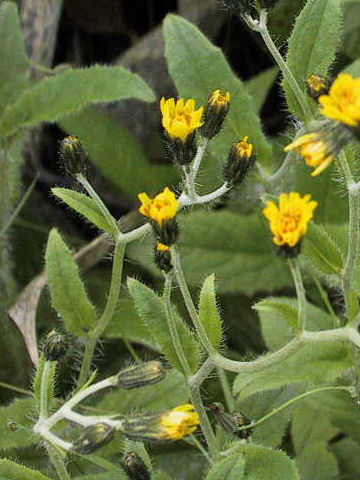

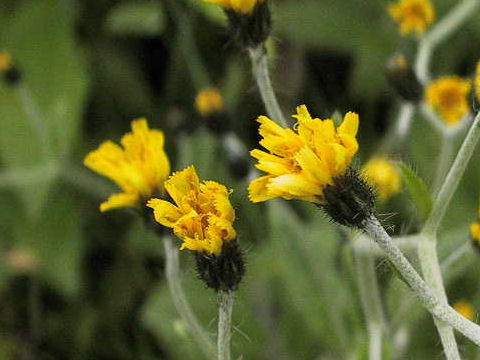

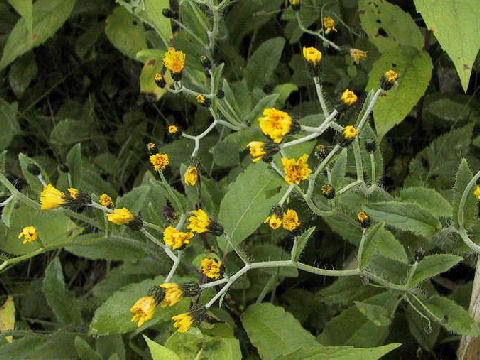

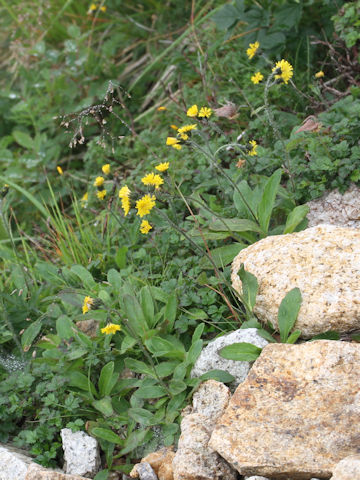

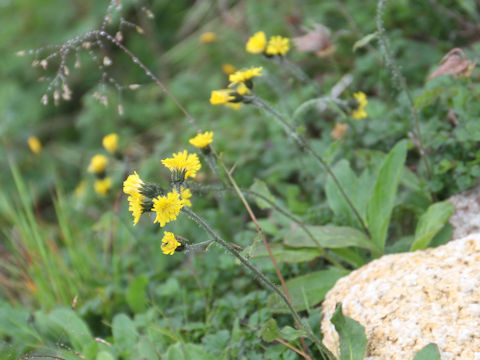

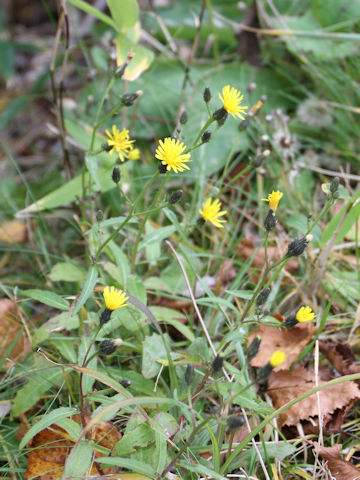

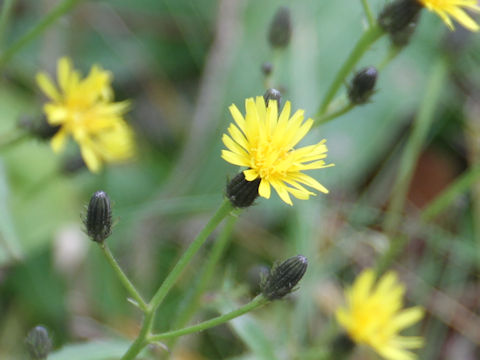

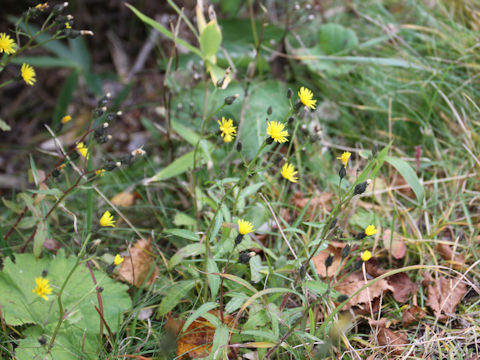

|

|
わが国の固有種で、本州の中部地方以北と四国に分布しています。亜高山帯から高山帯の草原や岩礫地に生え、高さは10〜40センチなります。茎や総苞には剛毛と赤褐色の綿毛が生えます。根生葉はよく発達して、花期にも残ります。よく似た「かんちこうぞりな(寒地髪剃菜)」には葉に鋸歯がありますが、本種は全縁です。7月から8月ごろ、濃い黄色の頭花を2〜13個ほど咲かせます。舌状花はほとんど直立して平開しません。総苞は広い筒形で、黒色を帯びています。
|

|
キク科ヤナギタンポポ属の多年草で、学名は Hieracium japonicum。英名はありません。
|

|
The "Miyama-kouzorina" (Hieracium japonicu) belongs to Asteraceae (the Aster family). It is a perennial herb that is endemic to Japan and distributed northward from Chubu district to Tohoku district of Honshu and Shikoku. This herb grows in sub-alpine to alpine grasslands and screes, and can reach 10-40 cm in height. The stems and bracts are covered with bristle hairs and red-brown wooly hairs. The basal leaves are well developed and still present when plants are flowering. It resembles to "Kanchi-kouzorina" (Picris hieracioides ssp. kamtschatica), though it's leaves are entire. The 2-13 dark yellow flower-heads bloom from July to August. The ray flowers are fairly erect and do not spread out. The bracts are broad cylindric and tinged black.
|

|
[上・中1〜2] 岐阜県丹生川村久手「乗鞍岳」にて、2002年08月17日撮影。
[中3・中4] 長野県白馬村「唐松岳」にて、2016年07月30日撮影。
[中5〜6・下] 岩手県八幡平市野駄にて、2017年10月09日撮影。
|









